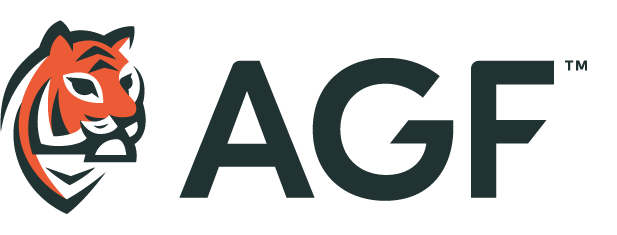
An Alternative(s) Take on the New Year
Author: Ash Lawrence
January 13, 2023
There are always lessons to be learned from a bear market such as the one investors experienced this past year. But of all the wisdom that can be gained, perhaps one of the most important takeaways is the increasingly important role that alternative investments can play in support of a more traditional 60/40 portfolio.
Such a portfolio on its own no longer provides the kind of fail-safe diversification it once promised — or regularly achieved — since it was first theorized in the early 1950s and put into practice shortly thereafter.
After all, without some allocation to alts in 2022, many investors utilizing a strict mix of stocks and bonds just endured one of the worst calendar years of performance in almost a century. Both asset classes were down more than 20 per cent at various times, Morningstar data shows, and combining them in a portfolio led to a 18.6 per cent year-to-date loss through November based on a 60-per-cent allocation to the S&P 500 Index and 40 per cent to the Bloomberg 10-Year+ U.S. Treasury Index.
Moreover, this disturbing trend may not have run its course just yet. A further moderation in rate hikes by central banks and their eventual pause could bolster stock and bond returns in the new year, but it’s still unclear when exactly the United States Federal Reserve and other central banks will stop their current tightening cycle and declare victory in their fight against inflation.
In turn, both asset classes should remain volatile over the next few months and may be susceptible to further losses if monetary policy doesn’t shift direction as expected and correlations between the two asset classes remain at historical highs.
That, however, doesn’t mean 60/40 portfolios should be abandoned altogether. In time, the historical dynamic between bonds and stocks is likely to return, especially in the case of a recession, which could give bonds an undoubted boost while leaving equities more vulnerable.
But in this type of uncertain environment, we believe the benefit of alternative asset classes or strategies that supply less-correlated returns to stocks and bonds has never been more obvious. And while institutional investors are well known for having very large exposure to alts, even the smallest of allocations can make a difference to the overall performance and volatility of a portfolio.
Of course, investors now have several options available to them on this front, including private-capital alternatives that were once the sole reserve of institutions not too long ago. These strategies include private equity, private credit, real estate and infrastructure. Though less liquid in nature, they have largely escaped the volatility that the public markets have experienced over in 2022.
Specifically, we believe an asset class such as private credit offers some attractive characteristics heading into the new year, namely, returns that are correlated with rising rates, attractive distributions moving forward and a market growth opportunity in Canada that has historically been dominated by traditional bank lenders.
Regulations that place increasing capital buffer requirements on Canada’s banks have cooled their lending appetite and increased the bar for borrowers to qualify. This has opened the door for private lenders to access a pool of potential credit-worthy borrowers that had typically satisfied Canada’s largest banks.
Couple this market opportunity with the attractiveness of issuing floating-rate loans in today’s rising rate environment and interest payments that provide distributions to investors, and we think investors should give private credit a look.
Institutional investors are certainly paying more heed to the attractive features of private credit, with institutional assets in the sector projected to grow by almost US$800 billion globally over the next five years, according to Preqin, an alternatives investment data firm.
Granted, investors will need to assess the potential risks and rewards of the various alternatives at their disposal in 2023 with the same scrutiny they pay to the stocks and bonds they own. As an example, the term “private credit” covers a wide spectrum of risk, from direct senior secured lending to riskier unsecured or mezzanine loans. All are not created equal.
And be wary of cryptocurrencies or other highly speculative corners of the alts complex that are either unregulated or lack proper governance and legitimate track records to be confidently assessed. In our opinion, they may not be worth the risk, especially today.
But with the right approach, and the right asset classes and strategies, the knowledge that alternatives can enhance portfolio outcomes during these uncertain times is one lesson from the past year that should not be forgotten anytime soon.
The views expressed in this blog are those of the authors and do not necessarily represent the opinions of AGF, its subsidiaries or any of its affiliated companies, funds, or investment strategies.
This document contains forward-looking information that reflects our current expectations or forecasts of future events. Forward-looking information is inherently subject to, among other things, risks, uncertainties, and assumptions that could cause actual results to differ materially from those expressed herein.
The commentaries contained herein are provided as a general source of information based on information available as of December 20, 2022 and are not intended to be comprehensive investment advice applicable to the circumstances of the investor. Every effort has been made to ensure accuracy in these commentaries at the time of publication, however, accuracy cannot be guaranteed. Market conditions may change and AGF Investments accepts no responsibility for individual investment decisions arising from the use or reliance on the information contained here.
“Bloomberg®” and Bloomberg 10-Year+ U.S. Treasury Index are service marks of Bloomberg Finance L.P. and its affiliates, including Bloomberg Index Services Limited (“BISL”), the administrator of the index (collectively, “Bloomberg”) and have been licensed for use for certain purposes by AGF Management Limited and its subsidiaries. Bloomberg is not affiliated with AGF Management Limited or its subsidiaries, and Bloomberg does not approve, endorse, review or recommend any products of AGF Management Limited or its subsidiaries. Bloomberg does not guarantee the timeliness, accurateness, or completeness, of any data or information relating to any products of AGF Management Limited or its subsidiaries.
AGF Investments is a group of wholly owned subsidiaries of AGF Management Limited, a Canadian reporting issuer. The subsidiaries included in AGF Investments are AGF Investments Inc. (AGFI), AGF Investments America Inc. (AGFA), AGF Investments LLC (AGFUS) and AGF International Advisors Company Limited (AGFIA). AGFA and AGFUS are registered advisors in the U.S. AGFI is registered as a portfolio manager across Canadian securities commissions. AGFIA is regulated by the Central Bank of Ireland and registered with the Australian Securities & Investments Commission. The subsidiaries that form AGF Investments manage a variety of mandates comprised of equity, fixed income and balanced assets.
® The “AGF” logo is a registered trademark of AGF Management Limited and used under licence.
About AGF Management Limited
Founded in 1957, AGF Management Limited (AGF) is an independent and globally diverse asset management firm. Our companies deliver excellence in investing in the public and private markets through three business lines: AGF Investments, AGF Capital Partners and AGF Private Wealth.
AGF brings a disciplined approach, focused on incorporating sound, responsible and sustainable corporate practices. The firm’s collective investment expertise, driven by its fundamental, quantitative and private investing capabilities, extends globally to a wide range of clients, from financial advisors and their clients to high-net worth and institutional investors including pension plans, corporate plans, sovereign wealth funds, endowments and foundations.
Headquartered in Toronto, Canada, AGF has investment operations and client servicing teams on the ground in North America and Europe. AGF serves more than 800,000 investors. AGF trades on the Toronto Stock Exchange under the symbol AGF.B.
For further information, please visit AGF.com.
© 2025 AGF Management Limited. All rights reserved.






